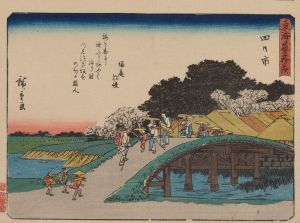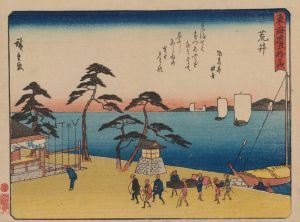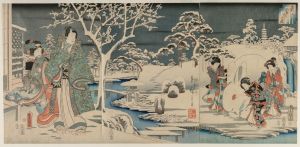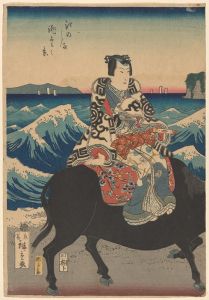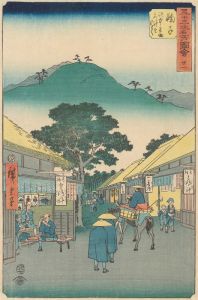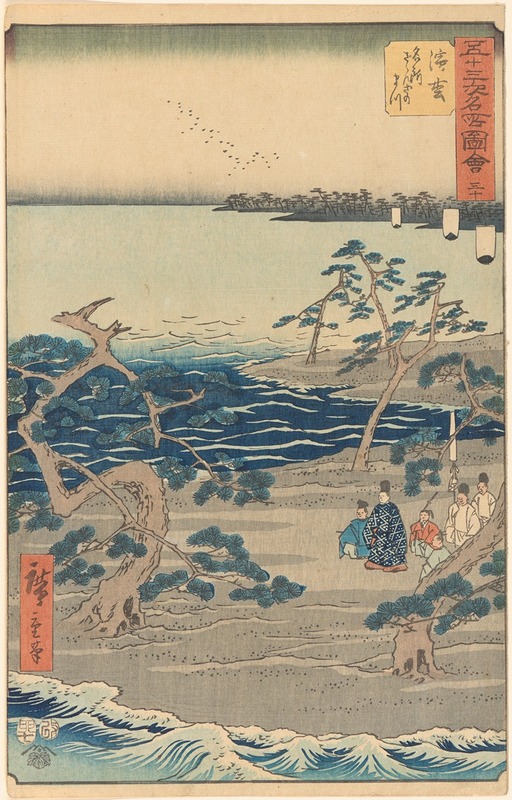
Hamamatsu
A hand-painted replica of Andō Hiroshige’s masterpiece Hamamatsu, meticulously crafted by professional artists to capture the true essence of the original. Each piece is created with museum-quality canvas and rare mineral pigments, carefully painted by experienced artists with delicate brushstrokes and rich, layered colors to perfectly recreate the texture of the original artwork. Unlike machine-printed reproductions, this hand-painted version brings the painting to life, infused with the artist’s emotions and skill in every stroke. Whether for personal collection or home decoration, it instantly elevates the artistic atmosphere of any space.
Andō Hiroshige, a renowned Japanese ukiyo-e artist of the Edo period, is celebrated for his landscape prints and depictions of everyday life. One of his notable works is "Hamamatsu," which is part of his famous series "The Fifty-three Stations of the Tōkaidō" (Tōkaidō Gojūsan-tsugi), created in the early 1830s. This series illustrates the scenic journey along the Tōkaidō road, which connected Edo (modern-day Tokyo) to Kyoto, capturing the essence of travel and the beauty of the Japanese landscape during that era.
"Hamamatsu" is the 30th station in the series and depicts a scene from the coastal city of Hamamatsu, located in present-day Shizuoka Prefecture. Hiroshige's portrayal of Hamamatsu is characterized by its serene and atmospheric quality, typical of his style, which often emphasizes the harmony between human activity and nature. The print captures a winter scene, with travelers making their way through a snowy landscape. The composition is marked by the presence of pine trees, which are a recurring motif in Hiroshige's work, symbolizing endurance and resilience.
The "Fifty-three Stations of the Tōkaidō" series was inspired by Hiroshige's own travels along the Tōkaidō road, which was the most important of the Five Routes of the Edo period, facilitating travel and trade between the two major cities. The series was published by the Hoeido publishing house and became immensely popular, establishing Hiroshige's reputation as a master of landscape prints. Each print in the series offers a unique glimpse into the diverse geography and culture of Japan during the Edo period, with "Hamamatsu" being a prime example of Hiroshige's ability to convey mood and atmosphere through his use of color and composition.
Hiroshige's work, including "Hamamatsu," is noted for its innovative use of perspective and color, which influenced not only Japanese art but also Western artists, particularly the Impressionists. His ability to capture transient moments and the subtleties of light and weather conditions has been widely admired and studied. The "Hamamatsu" print, like many others in the series, reflects Hiroshige's keen observation of the natural world and his skill in rendering it with simplicity and elegance.
The legacy of Hiroshige's "The Fifty-three Stations of the Tōkaidō" series, including the "Hamamatsu" print, continues to be celebrated for its artistic and historical significance. It provides valuable insight into the cultural and social aspects of travel during the Edo period, as well as the aesthetic principles that define ukiyo-e art. Hiroshige's work remains influential, and his prints are held in high esteem by collectors and art historians worldwide.





